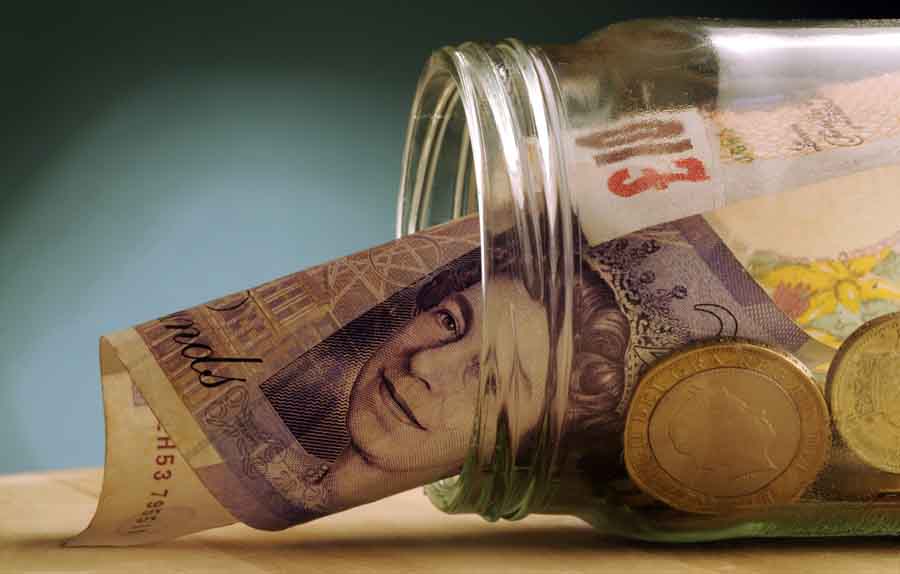07
April 2016
Tax-Free Personal Savings Allowance Explained
The new tax year starts today and with it comes the new tax-free personal savings allowance, representing one of the most important shifts in savings for a long time.
As of 6 April this year, depending on your income tax level, you will be able to earn a certain amount of interest on your savings completely tax-free.
If you make the most of these changes, then your savings income could get a real boost, so let’s have a look at exactly how it all works:
How much tax-free interest can I earn?
The Personal Savings Allowance, acts much in the same way as the personal income allowance does, only rather than being fixed, it scales depending on the income tax bracket that you fall in.
For each bracket, the allowance is the amount of interest you can earn before you start paying tax on it.
The breakdown is as follows:
| Tax Rate | Income Band | Personal Savings Allowance |
|---|---|---|
| 20% (basic) | Up to £43,000 | £1,000 |
| 40% (higher) | £43,001-£150,000 | £500 |
| 45% (additional) | Over £150,000 | £0 |
After you have earned the relevant amount in interest (if you do at all), you’ll then pay tax at the same rate as you pay income tax on anything further.
If you earn under £17,000 in taxable income, then you won’t pay tax on any of the interest you earn of savings.
This means that for basic rate taxpayers with a top instant access savings account, you won’t pay any tax on interest earned on a savings balance of up to nearly £75,000.
Based on average savings per individual, the government estimate that following the introduction of the Personal Savings Allowance, 95% of all savers in the UK will pay no tax whatsoever on their savings.
This is a big deal.
And it’s not just for dedicated savings accounts either.
The PSA applies to any interest earned on money in any kind of bank account or bond, including money held in peer-to-peer saving schemes. The only type of interest not covered is that earned from dividends on shares.
If you’ve got a joint account open with your partner and you’re both on different income tax rates, then your allowances will be added together and any interest earned will be counted as shared.
So if you’re paying higher rate income tax and your partner is paying basic rate and you earn £500 in interest then, effectively, you’ll have £250 worth of your PSA left and your partner will have £750.
What if my interest earned pushes me into a higher tax band?
The PSA limits are worked out based on your adjusted net income. This includes all of your employment income as well as interest earned on savings and other dividends.
As such, if your initial taxable income from employment is just below any of the income tax bands, and you earn enough interest on your savings to push you into the next bracket, then your PSA limit will be that which applies to the higher band.
For example:
You earn £42,500 from your employment.
You earn £1,500 in savings interest.
This would make your net income (excluding any deductibles like pension contributions for the sake of argument) £44,000, pushing you into the higher income tax band.
In this case, £500 of your interest would be tax-free, and the rest would be taxed at the appropriate rates.
So the first £500 (that doesn't yet push you into the higher band) would be taxed at 20%, then you would get the next £500 tax-free, and the remaining £500 will be taxed at 40%.
Of the £1,500 interest you earn, you'd take home £1,200.
This does mean that if you're right on the cusp and say, £50 of your savings interest pushes you into a higher bracket, you'd actually be worse off than if you earned a little bit less interest. Though this applies only in a fairly narrow set of circumstances and even if you do find yourself in this position, you could get around it by, for example, dividing your savings between you and a partner.
What about ISAs?
You might be thinking – this sounds a lot like an ISA.
And you’d be right, it does.
You might be wondering – will any tax savings I make on interest earned on my ISA interfere with this?
Thankfully, no, they won't - your ISA allowance and your PSA limit are totally separate.
The same applies to any other kind of tax-free interest including rewards earned from Premium Bonds.
All existing forms of tax-free interest are excluded from the PSA – the £1,000 or £500 tax-free interest you can now get depending on your income tax band is purely supplementary.
What this does mean is that the choice between opening up a conventional savings account or an ISA becomes a little more straightforward. No longer will you have to make complicated calculations balancing interest earned with money saved from tax not paid.
As Martin Lewis of Money Saving Expert says: “for most people the personal savings allowance will mean all of their savings are tax-free, and therefore when choosing a product, the basic question is simply ‘what pays the highest rate?’”
And since ISA rates tend to be, on the whole, a little lower than equivalent rates for conventional savings accounts (due to what was their unique benefit in tax-relief), savings accounts will win out more times than not.
For those saving larger amounts (i.e. large enough to exceed the Personal Savings Allowance for each tax band), ISAs will win out but even then, you’ll be best off holding up to the PSA limit in a conventional saver and opening up an ISA to store the rest.
The one lasting benefit of an ISA is that they are future-proof in terms of general rate rises. So if (or rather, when), interest rates go up, everyone with a savings account will hit their PSA limit sooner. With an ISA, your interest is tax-free all the time.
Start Saving
Recently, low interest rates have meant that the saving landscape has suffered somewhat, but the introduction of the PSA is certain to soften any recently dealt blows.
Effectively, you can consider this as though the interest rate on your savings account (at least for the first £500-£1,000 worth of interest paid) has gone up by 20-40% depending on the rate at which you pay income tax.
Check out our savings account comparison tool in light of this new change and see how much you could be earning. You can compare cash ISAs as well to work out the best way to maximise the amount of tax-free interest you can earn.





